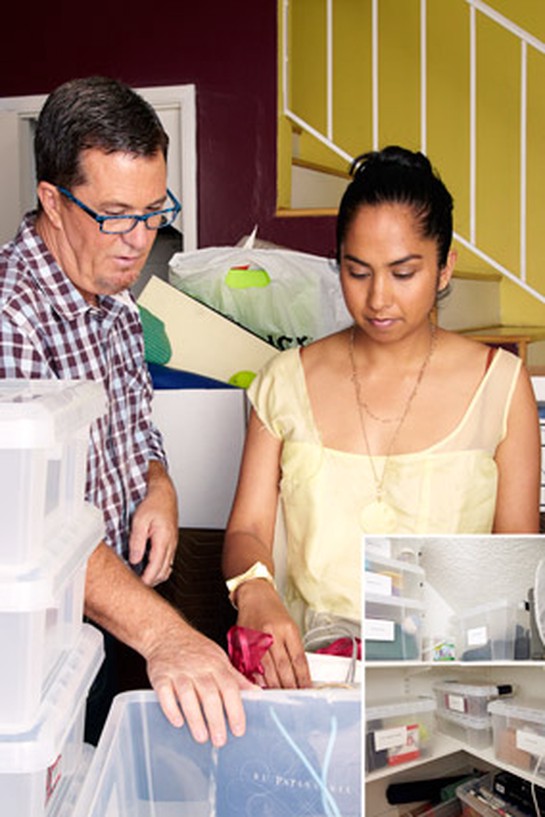Home Makeover: Refresh Your Under-the-Staircase Space
The Process
When Walsh and Sohal begin their purge, both seem dumbfounded by how much stuff she's managed to, well, stuff into this small lair. Sorting like items into large plastic bins, they create piles of kids' toys (Taboo, sidewalk chalk), home stuff (screwdrivers, batteries, the candles Sohal keeps on hand in case of an earthquake), sporting equipment (tennis balls, golf gloves), and baby gear (a car seat, a mosquito net covering for a bassinet). A bin labeled HUSBAND, meanwhile, fills with a running vest, a radar detector, and shoe polish. Next Walsh stacks several sizes of clear plastic bins on the newly excavated built-in shelves to gauge how much volume the closet can comfortably hold, since he is adamant that the floor remain clear. "Once you get floor creep, you've lost the battle," he says gravely.


